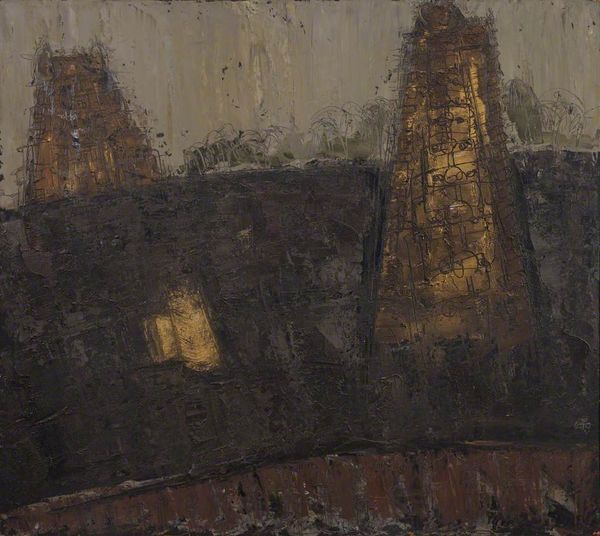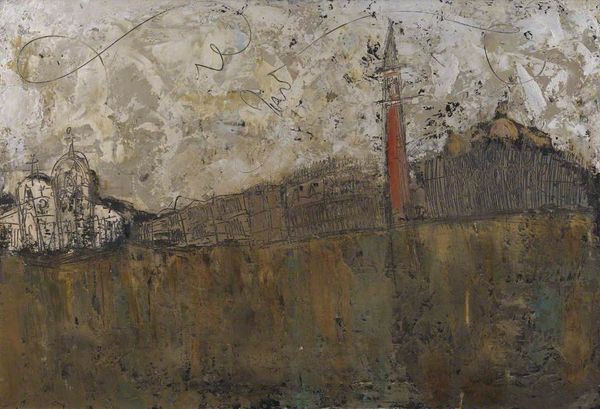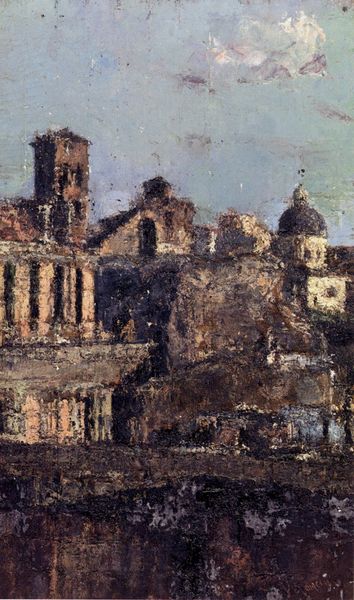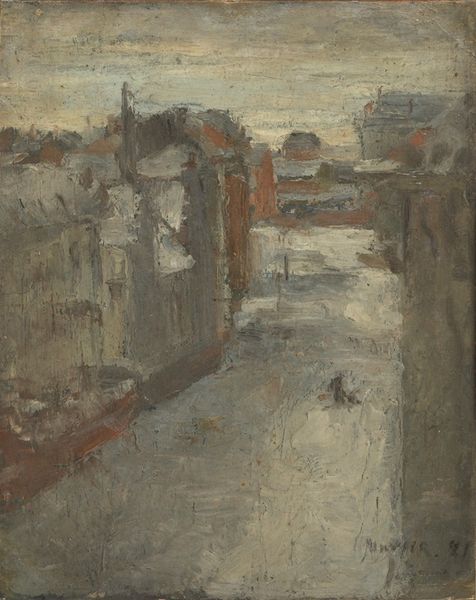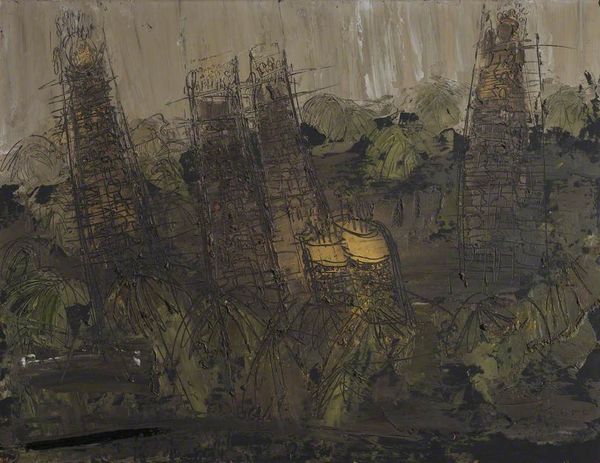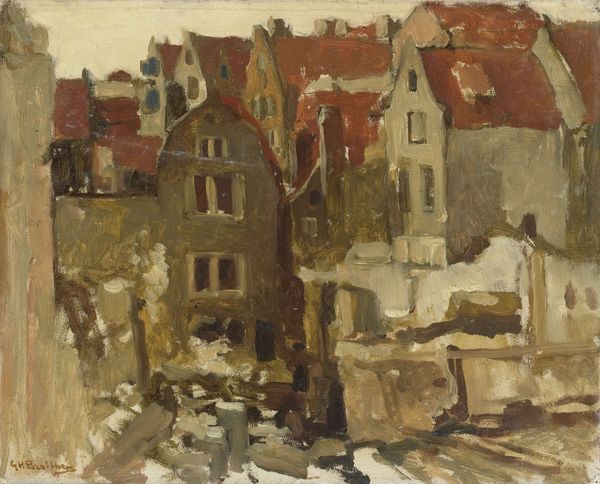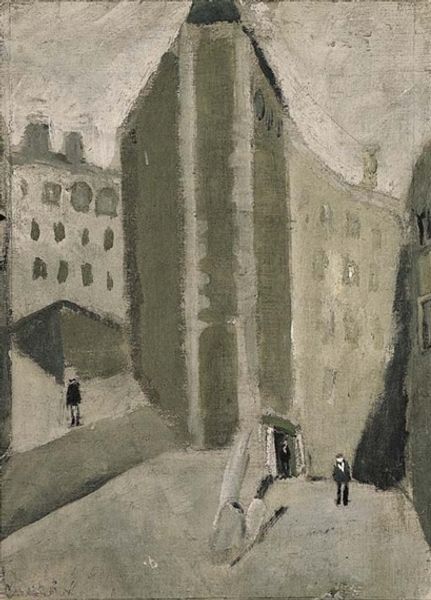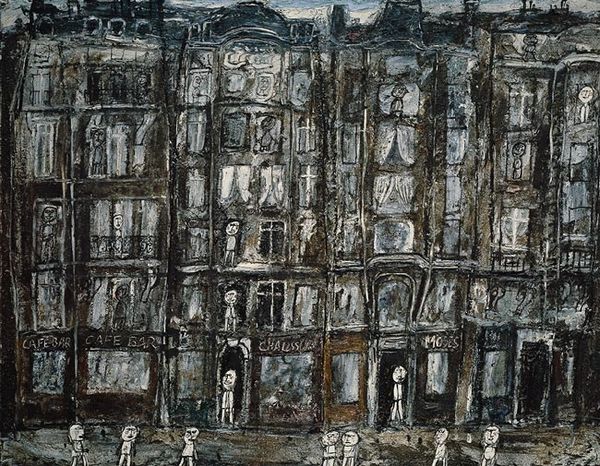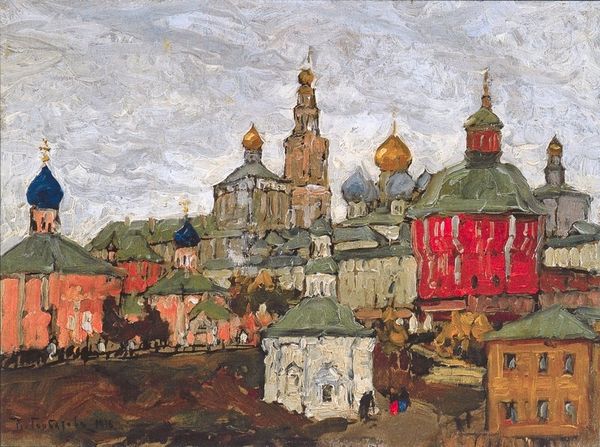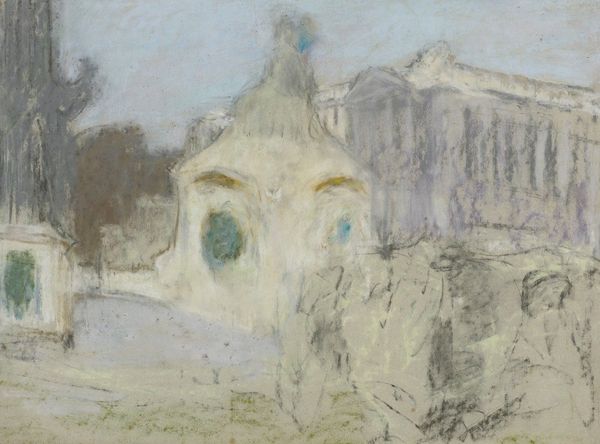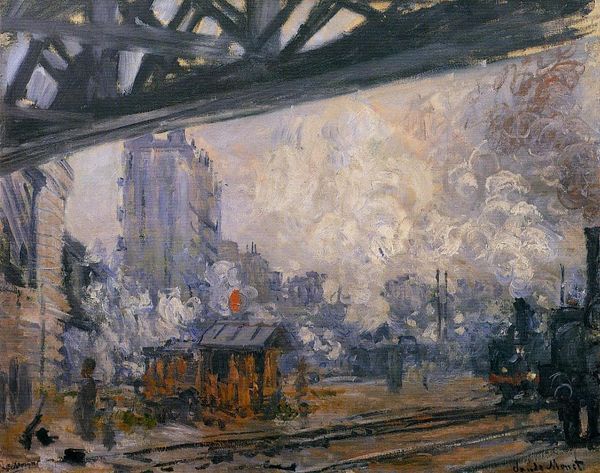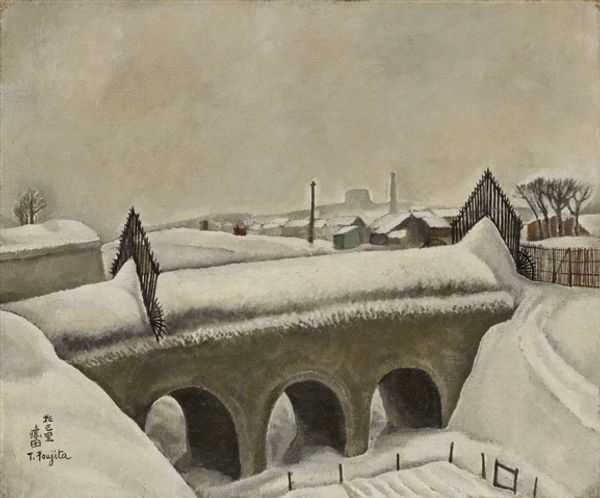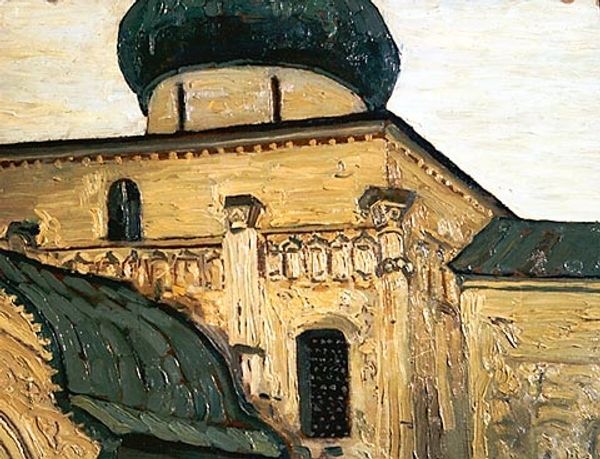
Copyright: William Congdon,Fair Use
Editor: This is William Congdon's "Naples, Church," created around 1950 using mixed media including oil paint and something called 'matter-painting'. It feels chaotic and raw, not at all what I'd expect from a traditional cityscape. What's your take on it? Curator: Congdon's "Naples, Church" certainly disrupts our conventional understanding of both cityscapes and religious architecture. Given Congdon's biography, and his later embrace of Benedictine monasticism, do you see this piece as purely representational, or something more? Editor: Something more, definitely. It's like he's grappling with something – a tension between the spiritual and the material, perhaps? The application of materials looks heavy, not light and airy as you might expect from such a glorious church dome. Curator: Precisely. And that’s where thinking about art historically is useful. Post-war art frequently wrestled with how to represent faith in a world ravaged by conflict and shifting values. Congdon's expressionistic style emphasizes subjective experience, pushing back against idealized depictions. The heavy application of "matter-painting," as you pointed out, contributes to a feeling of unease, mirroring perhaps the social and spiritual uncertainties of the time. Do you think Congdon is celebrating the Church here? Editor: No, not celebrating in a straightforward way. It feels more like a reckoning, maybe a questioning. Considering the social context definitely makes the image much richer and more complicated than I originally thought. Curator: Exactly! And understanding that complexity, acknowledging the historical and social currents that shaped its creation, is vital to truly understanding the power and impact of art. It provides us a better and wider appreciation of Congdon and "Naples, Church". Editor: I see. Thanks; it definitely puts this painting into a whole new perspective for me.
Comments
No comments
Be the first to comment and join the conversation on the ultimate creative platform.
